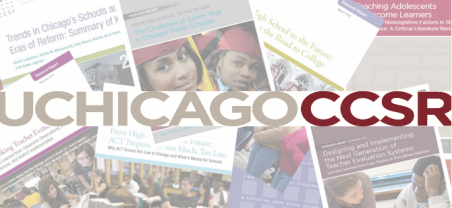
by Christian D’Andrea
MacIver Institute Education Policy Analyst
Is ninth-grade intervention the key to raising graduation rates for low-performing students? A group of 20 schools in Chicago is betting on it – and seeing some encouraging results.
A pair of studies released this week by the University of Chicago looked at an initiative within Chicago Public Schools (CPS) that focused on ninth-graders in 20 schools within the district. The theory is that a student’s freshman year is the most important to his or her future success in the classroom. By emphasizing early intervention using real time data and giving teachers more latitude to intervene before their students fall behind – with calls home, additional coursework, and more focused mentoring – these schools have improved the on-track success rate of their ninth graders.
These “early mover schools” increased the overall amount of attention paid to their transitioning students (students transititioning from middle school to high school) and the amount of college readiness preparation they received. The pupils appear to have responded positively to the extra attention.
The percentage of students who were “on-track” to graduate in these schools rose dramatically from 60 percent to 82 percent between 2008 and 2013, according to the study. However, these gains only became apparent once CPS began to issue monthly data reports for each high school, which gave their teachers more flexibility to address their at-risk children.

On-track students are defined as freshmen that earned enough credits to move on to 10th grade and no more than one “F” grade in their core coursework. It is encouraging to note that these gains were seen across racial and gender lines and also applied to students from differing backgrounds of past achievement in the classroom. These on-track rates improved more among African American males than any other racial/ethnic gender subgroup observed in the study.

In many of these schools, increased “on-track” rates led to stronger graduation rates down the line. However, without an isolated look at these interventions compared to other factors, it’s difficult to distinguish just how much the initiative truly impacted these high school completion numbers. As more and more students graduate, we’ll have more data and a better idea of how sustainable these freshman year interventions can be in inner city public schools.
Chicago’s experience with its early mover schools could provide hope for students in Milwaukee, a district where intervention and turnaround programs have had few consistent victories. The state recently shelved plans to shut down and replace failing schools throughout Wisconsin, which may place an even greater emphasis on finding methods that work at chronically underperforming schools. If CPS’s strategy is portable and scalable to a larger sample size, early movers may be an idea worth exploring here in Wisconsin.

Many questions still remain about the long term benefits of these interventions, but the University of Chicago study reports that students are more successful completing the ninth grade when their teachers have more freedom to intervene before any child falls too far behind. If these new techniques are, in fact, the driving force behind significant improvements for high school students, they could become a new standard for urban district intervention. While the jury is still out, the initial returns are encouraging – and that’s good news for Chicago students.